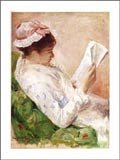 The Missing Ink: The Lost Art of Handwriting by Philip Hensher
The Missing Ink: The Lost Art of Handwriting by Philip HensherMy rating: 5 of 5 stars
“Handwriting is good for you,” says Philip Hensher. “It involves us in a relationship with the written word which is sensuous, immediate, and individual.”
(The incontrovertible truth of the author’s conclusion is made so much more endearing, to me, by the nonchalant use of the Oxford comma.)
This is not an author who shies from his opinions, or from sharing his vocabulary. Haruspication! Really? Oh, Philip, how do I love thee?
The Missing Ink is a very personal amble with handwriting and pens. You get history, style, art, practice, and glances into strange places, real and virtual. How delectable to learn that there is a “gloriously mad blog” out there that teaches how to improve your penmanship by changing your menu? Or that the Prince of Wales writes long letters to various government ministries, imparting his philosophy in purple ink?
The subject of handwriting analysis yields treasures. What does one have to see to believe that the penman “would jump out of an aeroplane… and drink the homebrewed absinthe of a Serbian warlord”? (And what, I wonder, would that do to my own handwring?)
Hensler devotes an entire chapter to the pen that has been my own guilty pleasure for over half of a century: the Bic Cristal. How many of these have I used until the last of the black ink, long disappeared from view and confined only within the oh-so-solid confines of the point, finally discharges its last, perfectly-black line? I hoard them against the day that some scribbling tyrant decides these pens are no longer necessary in the corporate line.
I love to read about ink colors. Hensler says, “I am not quite convinced about writing with blue ink… It is cozy and friendly, but perhaps not very serious… Beyond [blue-black or black], we are really into exotic and faintly frightening territory.”
Were I to write to the author, I would respect his preferences, but in (almost) all other ventures, I profess a great love for the purple, the turquoise, the sepia – even the occasional oxblood. I am, in most things, a child of the sixties.
(I do admit to having been chastised by a pen friend, once, for writing a red letter on yellow paper. Point, as it were, taken.)
Oxblood brings me back to Oxford. Yes, I love this book with all its whimsy, chattiness, and excellent punctuation. You – you know who you are – will also. I promise.
View all my reviews

